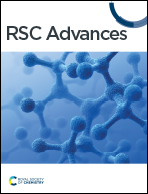Efficacy of modified carbon molecular sieve with iron oxides or choline chloride-based deep eutectic solvent for the separation of CO2/CH4
Abstract
It is necessary to separate CO2 from biogas to improve its quality for the production of biomethane. Herein, an improvement in the separation of CO2/CH4 via adsorption was achieved by modifying the surface of CMS. The surface modification of CMS was performed by impregnation with metal oxide (Fe3O4) and N-doping (DES–[ChCl:Gly]). Subsequently, the efficacy of the surface-modified CMS was investigated. This involved CMS modification, material characterization, and performance analysis. The uptake of CO2 by CMS–DES–[ChCl:Gly] and CMS–Fe3O4 was comparable; however, their performance for the separation of CO2/CH4 was different. Consequently, CMS–DES–[ChCl:Gly] and CMS–Fe3O4 exhibited ca. 1.6 times enhanced CO2 uptake capacity and ca. 1.70 times and 1.55 times enhanced CO2/CH4 separation, respectively. Also, both materials exhibited similar repeatability. However, CMS–DES–[ChCl:Gly] was more difficult to regenerate than CMS–Fe3O4, which is due to the higher adsorption heat value of the former (59.5 kJ).



 Please wait while we load your content...
Please wait while we load your content...